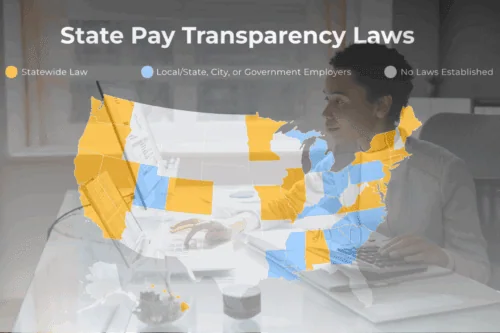Welcome to your essential guide on understanding labor law lunch breaks! Whether you are a recent high school graduate stepping into the workforce or a mid-career professional seeking a supportive work environment, knowing your rights and responsibilities regarding lunch breaks is crucial. This guide provides clear insights into the laws and regulations that govern your rights to breaks during work hours, helping you to make informed decisions and advocate for yourself in the workplace.
From federal standards to specific state regulations and employer obligations to employee rights, we cover everything you need to start your career on the right foot. Dive into this guide to better understand how proper lunch break practices contribute to a healthier, more productive work environment and how they can enhance your work-life balance.
Understanding Labor Law Lunch Breaks
Labor law lunch breaks are a vital aspect of employment law designed to ensure that workers have time to rest, eat, and refresh during their workday. They are regulated both federally and on a state level to protect workers from fatigue and enhance productivity. Here’s a closer look at what these laws entail:
Federal Regulations
Under the Fair Labor Standards Act (FLSA), no mandatory federal lunch break is required for employees aged 16 and older. Employers are not required by federal law to provide lunch or coffee breaks. However, if an employer offers a short break (usually 5 to 20 minutes), federal law considers the breaks as compensable work hours. U.S. Department of Labor – FLSA
Understanding Your Rights
Knowing your rights is crucial, particularly when they might differ based on state-specific regulations. Most states have their own laws regarding lunch breaks, which provide additional protections to employees:
- Meal breaks, typically 30 minutes or longer, enable the employee to eat a meal.
- Rest breaks, usually lasting about 10 to 15 minutes, are considered work and must be paid.
It’s also important to understand that exemptions exist depending on the job type, with different rules applicable to certain industries such as healthcare or transportation. Bureau of Labor Statistics provides resources that may further explain these nuances.
Labor law lunch breaks are essential for ensuring fairness and promoting health. They help maintain employee well-being and productivity. Thus, both employers and employees should be well informed about the law to ensure compliance and safeguard the rights of the workforce.
Federal Guidelines for Lunch Breaks
While the Fair Labor Standards Act (FLSA) does not mandate lunch breaks, it sets the stage for understanding what constitutes compensable work time during shorter breaks. Several federal agencies provide guidance and enforcement of these standards, ensuring workplaces conform to the basic rights of workers regarding meal and rest periods.
Department of Labor (DOL) Oversight
The DOL clarifies and enforces how breaks should be handled if provided. Their main focus is ensuring employees are not taken advantage of by ensuring employers uphold the correct compensation measures during work hours, including designated break times. Specifics can be accessed directly from the DOL’s Fact Sheet on Hours Worked.
Occupational Safety and Health Administration (OSHA) Regulations
Although OSHA does not regulate lunch breaks specifically, it emphasizes their importance from a health and safety perspective. They advocate for adequate breaks to prevent workplace injuries and health issues linked to overwork and fatigue. Further insights can be found in their general industry guidelines, which are available in OSHA Laws and Regulations.
In essence, while not explicitly required to provide lunch breaks, federal guidelines encourage the practice and seek to enforce proper handling when breaks are included. This ensures that workers have time to recuperate, indirectly supporting better overall health and safety conditions in the workplace.
State-Specific Regulations
Different states have their own rules about labor law lunch breaks, often providing greater protection than federal guidelines. Always check local laws to ensure compliance.
Examples of State Rules
In California, for instance, employees who work more than five hours a day are entitled to a 30-minute meal break. The California Department of Industrial Relations website provides more insights.
New York requires employers to provide at least a 30-minute break for shifts that span more than six hours, starting between 11 AM and 2 PM. The New York State Department of Labor’s website outlines specific details.
Checking Your State’s Regulations
- Always refer to your state labor department’s website for the most accurate and updated regulations.
- Consult legal professionals if unclear about how these laws apply to your specific situation.
Each state can vary widely in handling labor law lunch breaks, so understanding these nuances is crucial for employers and employees. This not only ensures legal compliance but also promotes a healthier work environment.
Employee Rights Under Labor Law Lunch Breaks
Understanding employee rights regarding labor law lunch breaks is key to utilizing them fully. Each employee should be aware of what they are entitled to to advocate effectively for their well-being.
Right to Uninterrupted Breaks
Employees are generally entitled to an uninterrupted break. This means that they should not be required to perform any work-related duties during this period.
Right to Waiver
In some states, employees can choose to waive their meal breaks, especially if they prefer to leave work earlier. However, this waiver must be voluntary and not pressured by the employer.
Additionally, if an employer does interrupt the break for work reasons, they may have to compensate the employee, often at an overtime rate. Details on compensation for interrupted breaks can be checked from credible sources like Nolo’s Employee Rights Guide.
Complaint Procedures
- Employees should also be familiar with the process of lodging a complaint if their rights are violated.
- Most states have specific departments where grievances about labor law violations can be reported.
Understanding these rights allows employees to recognize and act if they feel their rights to lunch breaks under labor law are being ignored or violated. More importantly, being informed empowers workers to contribute to a fair and just workplace culture.
Employers’ Obligations
Employers must adhere to specific obligations under labor law regarding lunch breaks to ensure compliance and fair treatment of employees.
Providing Timely Breaks
Employers must provide lunch breaks at appropriate times during the work shift, which typically means a break in the middle of the day.
Maintaining Records
Employers must keep accurate records of all breaks given to employees. This ensures transparency and accountability in adherence to labor regulations.
Legal Compliance and Penalties
Failure to comply with state and federal regulations can lead to significant penalties. Employers should consult resources like the Department of Labor’s Website to understand the implications of non-compliance. Additionally, compliance guides available on SHRM (Society for Human Resource Management) can help employers navigate these rules effectively.
Ultimately, by fulfilling these obligations, employers comply with the law and contribute to a healthier, more productive work environment. This fosters better employee satisfaction and retention.
Impact of Not Complying with Lunch Break Laws
Failure to adhere to labor law lunch break requirements can have serious repercussions for both employers and employees.
Consequences for Employers
Non-compliance can lead to legal challenges, including fines and penalties. These issues might also damage a company’s reputation and employee relations. Employers can find further guidance on maintaining compliance from the Department of Labor Compliance Assistance.
Effects on Employees
Lack of proper breaks can result in employee fatigue and decreased job satisfaction. This often leads to lower productivity and increased turnover rates.
Case Studies and Legal Precedents
Numerous cases have involved businesses facing legal action due to non-compliance. Cornell Law School’s Legal Information Institute provides information on past legal cases that can provide insight.
Understanding the consequences of not following labor law lunch break rules is essential for maintaining a harmonious and efficient workplace. It encourages compliance and respects employee welfare.
How to Address Issues with Lunch Breaks
Addressing issues related to labor law lunch breaks promptly and effectively is crucial for maintaining workplace harmony and legal compliance.
For Employees
If you believe your rights to lunch breaks are being violated, start by discussing the issue with your employer or HR department. If the situation does not improve, consider filing a complaint with your state labor board.
For Employers
Employers should ensure they have clear policies that comply with federal and state regulations. Regular training sessions on labor laws can help maintain awareness and compliance.
Legal Assistance
If disputes over lunch breaks escalate, seeking legal advice might be necessary. Both employees and employers can benefit from consulting a labor law attorney to navigate the complexities of labor law lunch break issues. Legal resources and finding an attorney can be facilitated through the FindLaw website.
Addressing these issues in a timely manner not only ensures compliance but also bolsters employee morale and productivity by showing a commitment to workers’ rights and well-being.
FAQs
What is a labor law lunch break?
A labor law lunch break is a designated period, typically unpaid, during which employees are free from duties.
Are labor law lunch breaks mandatory?
While federal law doesn’t mandate them, many states require specific lunch breaks. Employers must familiarize themselves with local laws.
How long is a standard lunch break under labor laws?
Most state laws stipulate a minimum of 30 minutes for a lunch break, particularly for shifts exceeding five or six hours.
Can I skip my lunch break?
In some states, employees can choose to waive their lunch break, but this must be a voluntary agreement.
What if my employer denies me a lunch break?
If an employer fails to provide the required breaks, employees should report the issue to their state’s labor department or seek legal advice.
These questions cover basic rights and employer obligations related to labor law lunch breaks, helping both parties understand and adhere to legal standards.
Conclusion
Understanding labor law lunch breaks is crucial for both employers and employees. It ensures that workers receive adequate rest during their workday, promoting better health and increased productivity. Employers also benefit from compliance, as it prevents legal issues and fosters a positive work environment.
For those navigating the complexities of labor law or seeking workplaces that honor these laws, we encourage you to join Diversity Employment. By joining, you can connect with employers committed to regulatory compliance and equitable treatment in the workplace. Enhance your career while promoting a fair and inclusive work culture.
Take the next step in your employment journey. Join Diversity Employment today and discover a community prioritizing diversity jobs, equity, and inclusion and ensuring everyone’s rights are protected.




